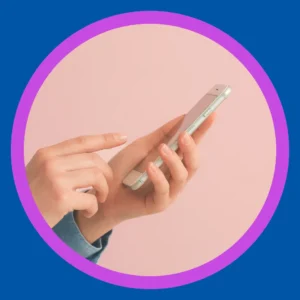6 Apps for Tinnitus Relief
Tinnitus is often described as a ringing, buzzing, or hissing sound with no external source. For many, including thousands of veterans and older adults, tinnitus is more than annoying, it’s disruptive and exhausting. Hearing aid manufacturers have stepped up to meet this challenge. They’ve developed tinnitus therapy apps designed to retrain the brain, mask symptoms, and make daily life more comfortable. One of the best-known and most clinically studied options is the ReSound Relief app.
In this guide, we’ll cover six tinnitus relief apps—including those from ReSound, Starkey, and Phonak—and explain how they work, why they help, and how you can start using them today.
Understand all about tinnitus.

Why Tinnitus Relief Apps Work
These apps aren’t just background noise. They offer sound therapy, which is clinically proven to reduce tinnitus severity over time.
Sound therapy does three important things:
- Masks the tinnitus sound with more pleasant or neutral sounds
- Distracts your brain by adding external auditory input
- Supports habituation, helping your brain tune out the ringing altogether
Apps make this therapy portable, personal, and accessible. Many can also pair with hearing aids, offering seamless relief wherever you are.
1. ReSound Relief
Clinically Proven Sound Therapy, Right on Your Phone
The ReSound Relief app is a free tinnitus therapy tool available on iOS and Android. You don’t need ReSound hearing aids to use it, though pairing it with hearing aids enhances the benefits.
It combines four key therapy strategies: sound masking, distraction, habituation, and relaxation. The app includes:
- Customizable soundscapes (mix up to five different sounds)
- White, pink, and nature-based noise options
- Volume and balance controls for each ear
- MyRelief usage tracker and timer
- Educational content about tinnitus
A six-month clinical study showed consistent improvement in tinnitus symptoms with daily use of the app. It significantly reduced emotional distress, especially for veterans, who are disproportionately affected by tinnitus due to noise exposure during service.
Dr. Laurel Christensen, Chief Audiology Officer at ReSound (and a tinnitus sufferer herself), explains:
“Imagine being in a dark room with a candle. If the candle is the only light, you can’t ignore it. But if you add more light, it blends in. That’s what sound therapy does.”
Use ReSound Relief with headphones, wireless speakers, or directly through ReSound hearing aids like the ReSound Vivia, which has built-in tinnitus therapy programs.
2. Starkey Relax
Flexible Therapy from a Trusted Hearing Aid Manufacturer
Starkey’s Relax app offers a straightforward, easy-to-use tinnitus relief experience. Designed to support users with or without Starkey hearing aids, it features:
- 12 customizable soundscapes
- Volume and modulation settings
- Sleep timer and relaxation features
- Tinnitus education and coping resources
If you wear Starkey hearing aids, the Relax app can stream sounds directly into your devices. Starkey also offers MultiFlex Tinnitus Technology, available in its Edge AI lineup, which allows in-hearing aid therapy shaped to your audiogram.
For anyone seeking a gentle, clinically informed tinnitus app that works well with hearing aids, Starkey Relax is a strong choice.

3. Phonak myPhonak with Tinnitus Balance
Fine-Tuned Relief for Phonak Users
Phonak’s myPhonak app includes the Tinnitus Balance feature, a tool integrated into many Phonak hearing aids. This program lets you customize a wide range of noise options, including:
- Broad-spectrum noise (white, pink, brown)
- Soft, modulated tones
- Environmentally inspired soundscapes
The Tinnitus Balance program supports habituation, helping your brain gradually reduce its focus on tinnitus. It also allows hearing care providers to fine-tune your therapy to your specific hearing profile.
Phonak’s Sphere Infinio and Lumity hearing aids both support direct streaming from the app, providing real-time, in-ear tinnitus therapy that’s subtle but effective.
4. ReSound Smart 3D with Built-In Relief Integration
Advanced Customization for ReSound Hearing Aid Users
The ReSound Smart 3D app is designed for ReSound hearing aids like the Audeo Sphere Infinio and ReSound ONE. It includes full control of your hearing aids, plus:
- Direct integration with tinnitus sound therapy programs
- Quick adjustment of masking sounds and environmental settings
- Location-based sound profiles
- Remote fine-tuning with your hearing care provider
If you’re already using ReSound hearing aids, Smart 3D gives you even more control over your relief experience. You can toggle therapy modes, adjust your tinnitus sounds, and check your usage—all from your phone.
5. My Starkey
Personal Wellness and Tinnitus Support in One App
My Starkey isn’t just for hearing aid adjustments. It also supports tinnitus relief through:
- Tinnitus management settings
- Goal tracking and wellness monitoring
- Video tutorials and educational tools
- Connection to your hearing care provider for support
You can set relaxation goals, track your progress, and integrate tinnitus therapy with your broader wellness routine. If you’re using Starkey hearing aids like the Evolv AI or Genesis AI, My Starkey enhances your treatment plan with seamless app support.
6. Phonak Tinnitus Balance App (Standalone)
A Standalone Option for Those Without Hearing Aids
Phonak also offers a separate Tinnitus Balance app, ideal for users without hearing aids or those in the early stages of tinnitus management. It features:
- Pre-set noise files and soothing tones
- Simple, user-friendly interface
- Bluetooth compatibility with headphones or speakers
- A great starting point for tinnitus sound therapy
While it’s not as powerful as the in-hearing-aid options, it gives users a taste of Phonak’s sound therapy approach.
Honorable Mentions from Outside the Big Three
While Stanford Hearing focuses on medical-grade hearing solutions, there are some non-hearing-aid apps that may support your journey:
- AudioCardio – sound therapy that may improve hearing thresholds
- Oto – CBT-based tinnitus therapy
- Insight Timer – guided meditation for relaxation
- myNoise – customizable soundscapes for sleep and focus
These apps can help supplement care, but we recommend pairing them with hearing aid-based therapy for best results.
Other Ways to Manage Tinnitus
Relief from tinnitus often requires a combination of tools and strategies. In addition to apps, consider:
- Hearing aids with tinnitus masking programs
- Professional counseling (CBT, TRT, or relaxation therapy)
- Reducing stress and triggers like caffeine or loud noise
- Getting a full hearing evaluation to rule out other causes
Many veterans and adults over 50 find that managing hearing loss is the key to managing tinnitus.
Get the answers to questions about hearing loss.
Why Hearing Aids Help With Tinnitus
Up to 90% of people with tinnitus also have hearing loss. Hearing aids help by:
- Restoring lost sound, reducing the contrast with tinnitus
- Improving focus, especially in noisy environments
- Reducing cognitive strain, which can worsen tinnitus perception
- Providing masking sounds, especially in quiet settings
A study published in Brazilian Journal of Otorhinolaryngology showed that six months of hearing aid use significantly reduced tinnitus annoyance. The biggest improvements were in masking and emotional response.
Explore the link between tinnitus and dementia.

Let Stanford Hearing Help You Find Relief
If tinnitus is interfering with your sleep, your concentration, or your peace of mind, we can help. The team at Stanford Hearing provides expert evaluations, advanced hearing technology, and personalized tinnitus management plans.
Contact Stanford Hearing to explore which hearing aids and apps are right for your tinnitus relief.
